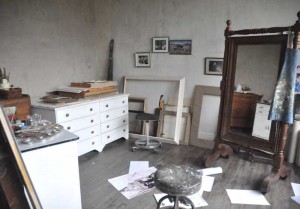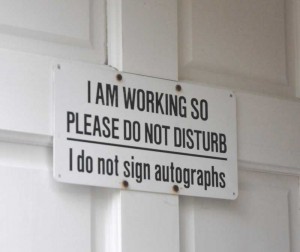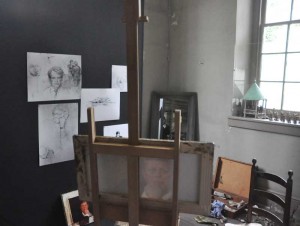Brandywine River Museum opening Andrew Wyeth’s studio for public tours in July
By Mike McGann, Editor, KennettTimes.com

Andrew Wyeth's studio seems much like his work, seemingly austere and colorless — until the small details, from his drawings on the floor, to the container of eggs, always from the local WaWa, reveal some of the artist's interior life. The Brandywine River Museum will be offering the first public tours of Wyeth's studio, starting in July.
CHADDS FORD — If the words Wyeth and art are synonymous in southeast Pennsylvania, it might be true for two other words: Wyeth and privacy.
While the acclaimed painting family is well-known for their community involvement for generations, their desire for privacy — and focus on their family and close friends, especially as Andrew Wyeth became an internationally renowned artist — was both somewhat legendary and almost universally understood and observed by local residents, even to this day.
Few, outside Wyeth friends and family — and his small circle of favored models — have been in Andrew’s studio. That will change this summer, as the Brandywine River Museum will begin offering tours in the building that served as a studio for Andrew — and his home until 1961. It is also the same home where Jamie Wyeth — yet another renowned painter in the family — grew up and has his first studio space.
While the public tours won’t begin until July (the museum will begin taking reservations on June 1), a special preview allowed an unusual view into the private world of the Wyeths — and some of the creative process used by Andrew and Jamie in creating their master works.

Andrew Wyeth's celebrity forced a certain amount of reserve and privacy to allow him to work. This sign on the door of his Chadds Ford studio typifies what so many local residents understood but tourists didn't always: the master artist needed to be left alone to be allowed to work.
The building itself — just off Creek Road, south of U.S. 1 — seems little different from the surrounding buildings. The building started out as a schoolhouse, built in 1875 as part of the Chadds Ford School District. Andrew’s father, N.C. Wyeth, bought the building in 1925 and expanded it, intending to use it as a studio — the eldest Wyeth came to national acclaim himself as a painter, illustrating Treasure Island among other classic books — but the building became home to Andrew and his bride Betsy and their children, including Jamie, until 1961, when they moved up the Brandywine.
The walls are covered with photos, family pictures, and images of family friends — telling the story of a fiercely private man who at the same time genuinely had a deep bond with those in his inner circle.
The building is both spartan and striking at the same time, and the museum has gone to great lengths to return it to the appearance of the middle of Andrew’s painting career. The kitchen — with a long table and fireplace — has a 1950s feel to it, thanks to period-correct appliances. This where the Wyeths often gathered with friends and family — and often a new painting would be shown over the fireplace, allowing for comment on it by visitors.

Jamie Wyeth used space in his father Andrew's studio early in his career. Here recreated is what the space looked like as the younger Wyeth worked on his acclaimed portrait of John F. Kennedy.
But it is the two studio spaces — one adapted by Jamie in the beginning of his career, and the second, larger studio used by Andrew for many of his masterworks — that seem to offer insight, a small peak behind the curtain of the artist at work. Weapons and military uniforms — used as models for some artwork are here and there, as are an enormous number of toy soldiers, Andrew’s collecting passion.
Like his father, Jamie initially used a mirror behind him to offer him a different perspective while painting, and it is that era in the early 1960s that is recreated in his studio space — sketches of President John F. Kennedy and his brothers for the painting the younger Wyeth was commissioned after JFK’s assassination dot the work area, as if a visitor wandered in as he was working.
The elder Wyeth’s space is more striking. Both stark and warm at the same time — because of bare walls and ceilings in need of repair (Jamie insisted his father liked it as it is shown), the room echoes the cool, under saturated color palette Wyeth became famous for. And yet, the room is full of touches that show the warmth, the humanity of the man.
Drawings and even paintings are scattered on the floor — at least one Andrew Wyeth work features the footprint of a young Jamie Wyeth, who stepped in the wrong place while visiting his father in the studio, clear evidence that was a long-standing habit. And the ever-present eggs — needed for tempera paint the elder Wyeth favored — they had to be large, white eggs from the WaWa that was just up the road, he insisted.
Even though the elder Wyeth has been gone for nearly three years, he presence still reverberates through the studio and the building.
Along with tours of the neighboring Kuerner Farm — neighbors that Andrew Wyeth often painted and formed a close friendship with — and the N.C. Wyeth home and studio, touring this building offers a deeper insight into the mind and life of the artist in a personal, real way.
Public tours begin July 1 and can be reserved at the Brandywine River Museum website.




